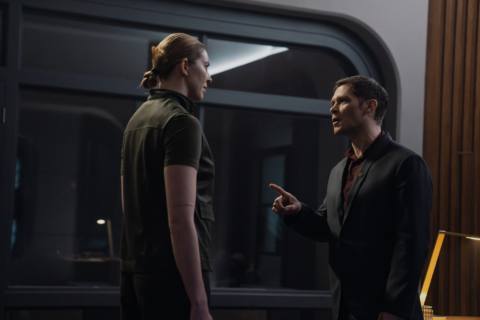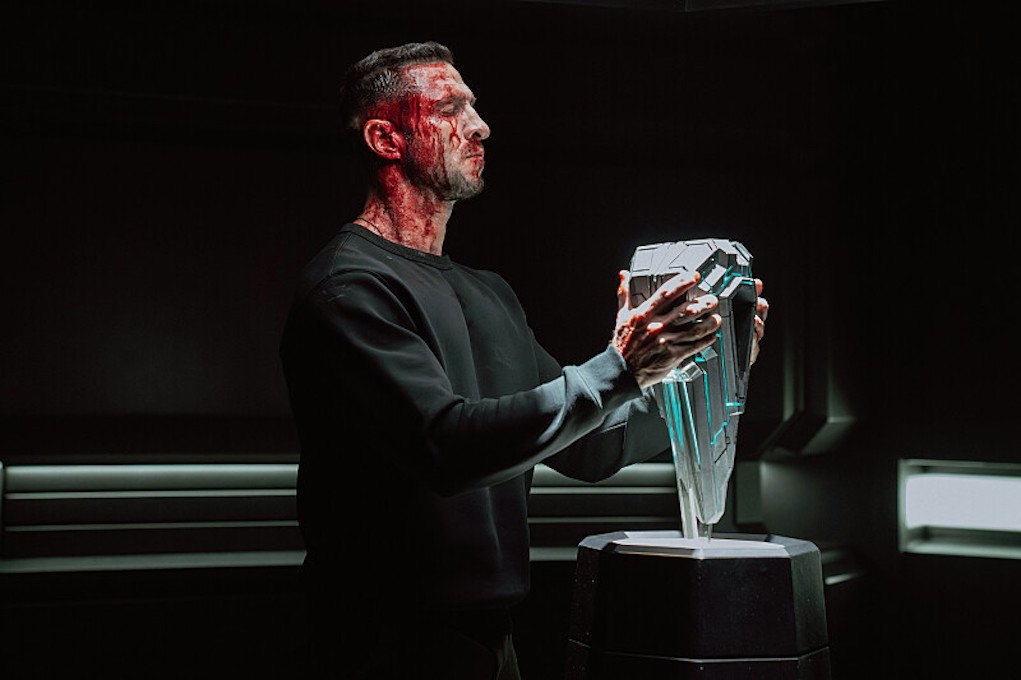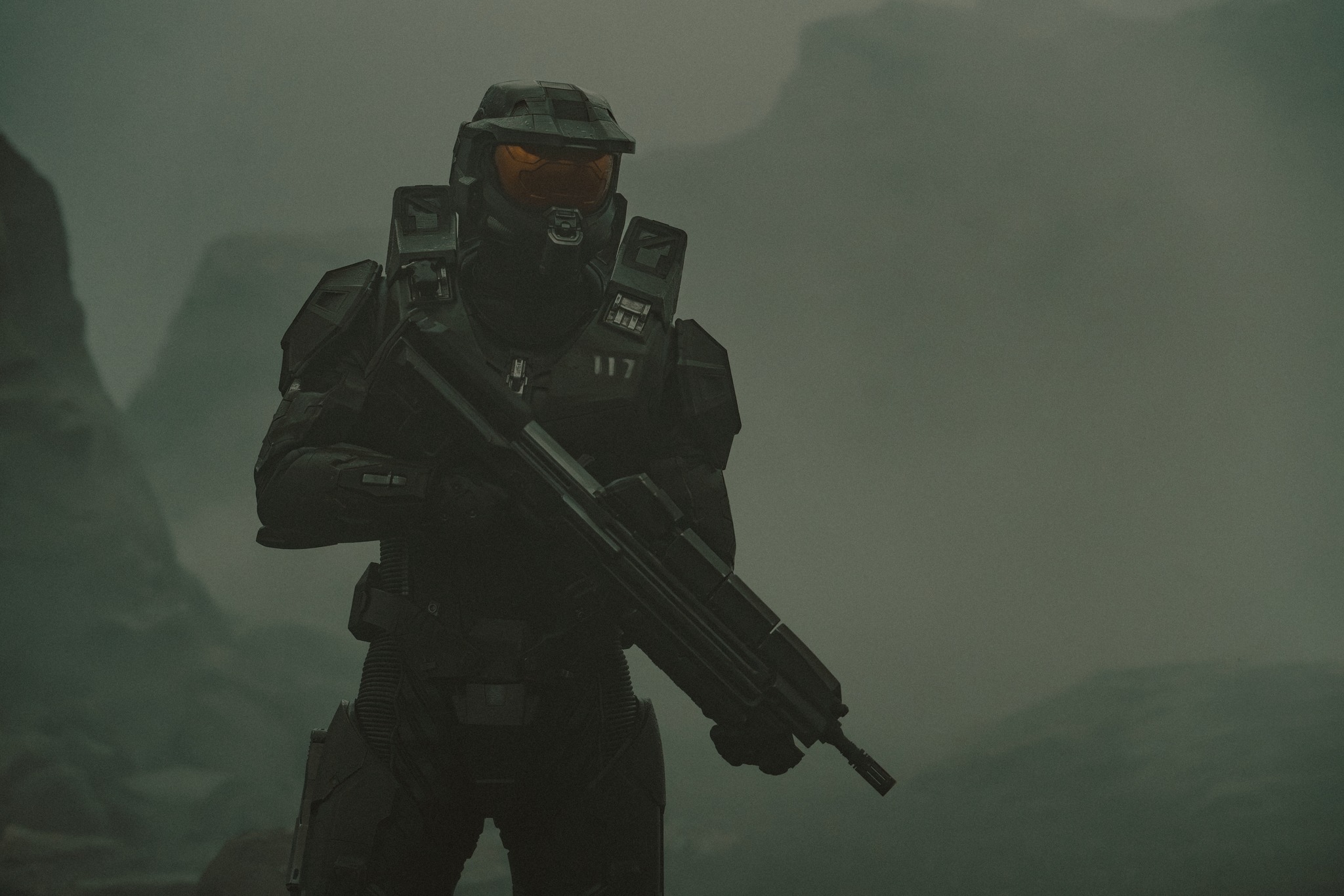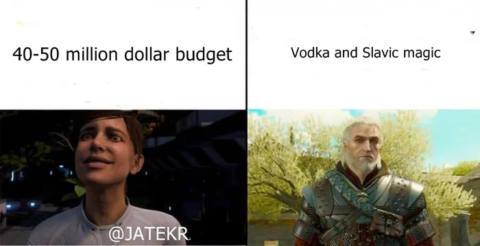“The Halo TV series has absolutely no vibes,” we wrote back in 2022 when the show debuted on Paramount+ with a nine episode season. It was the kind of adaptation that didn't quite seem to please anyone. Halo fans grumbled that Master Chief took his helmet off too much and that the show was ultimately a bit more interested in Master Chief having sex than fighting the Covenant. Critics grumbled that its plot seemed scattered and the action wasn't particularly impressive either. Turns out Master Chief actor Pablo Schreiber himself wasn't even happy about that sex scene, and everyone doing promo for season 2 has hyped up how much of an improvement it is over their first go.
Critics who've now seen the first half of season 2 seem to agree—but just barely.
“Halo has hit the reset button for its second season, though you might be forgiven for thinking it’s the panic button instead,” wrote our friends at GamesRadar+.
“While the new season boasts plenty more action, some of it impressively directed, and an overall tighter focus on its core premise of humanity’s survival, Halo still suffers from frustratingly inert and indecisive storytelling,” wrote Inverse.
That seems to be the general takeaway from the first four episodes of this season—Halo's jettisoned some of its baggage, but still hasn't found the right balance between action, character study and sci-fi politics. Here are some of the highlights from the early reviews.
Halo season 2's action is definitely improved
Jeremy Mathai, Slashfilm: “[New showrunner David] Weiner, his directing team (made up of Debs Paterson and Craig Zisk), and cinematographer Carl Sundberg instantly bring a much-improved sense of visual clarity and energy to the fights—accomplished, ironically enough, by muddying up the action and hiding the dodgier bits of VFX work behind tactile environmental effects like rain and fog, hard-hitting fight choreography, and kinetic camerawork along with appropriately moody lighting. (Those distracting in-helmet POV shots from season 1, meant to evoke first-person shooters, are thankfully discarded entirely.)”
Elijah Gonzalez, Paste Magazine: “This season starts strong with a desperate, cold-open skirmish that demonstrates the self-assured action filmmaking found throughout. These scuffles have an appropriate air of grandeur, conveying the scale of destruction leveled by humanity’s relentless foes thanks to expensive-looking VFX work and enough grounded details to keep us tethered to this futuristic conflict…
“Solid camerawork further bolsters the action. At one point, an obligatory Children of Men-styled oner delivers bracing close-quarters combat as our crew works through a deadly weave of incoming fire and faces impossible odds. The action choreography particularly shines when Chief and company get a chance to strut their stuff, ducking under Energy Swords and dismantling Elites with uncanny precision. There may be a bit too much shaky-cam in spots, but the visuals generally have enough clarity to get by.”
Bradley Russell, Gamesradar+: “The Elites that surround Master Chief (Pablo Schreiber) after a mission gone horribly wrong give off the air of a slasher movie, each one zipping in and out of heavy fog and dust…”
The main plot is more focused in season 2…

Alex Maidy, Joblo: “In the four episodes made available for this review, there is a noticeable focal point for the story, something that was very lacking in the kitchen sink approach of season one. This has pros and cons as the series definitely feels more like Halo but not because of the action. The world-building necessitated in the first season is greatly reduced, so the sophomore run gets to build on the heavy lifting that already took place.”
Bradley Russell, Gamesradar+: “That evolution is most keenly felt in Halo season 2's big new arrival. Meet the new boss of the Spartan program, James Ackerson (Joseph Morgan), the 'replacement' for Doctor Halsey. A headstrong, experienced combat veteran with a compelling layer of Machiavellian instinct bubbling away below the surface, Ackerson—brought in from Halo’s early novels—is a much-needed wild card that helps shake up the established (and often lethargic) dynamic of the UNSC in the first season.
“His early sit-downs with a prickly Master Chief are the highlight of the first two episodes. These scenes not only forward the plot in magnetic fashion, they’re a great proof of concept for the naysayers who want John simply to plod around in MJOLNIR armor for an entire season.”
…but still weighed down by distractions that don't work well

Bradley Russell, Gamesradar+: “The Rubble sections—which sees Soren (Bokeem Woodbine) search for the missing Doctor Halsey (Natascha McElhone), and Kwan Ha (Yerin Ha) on the run—feel even more superfluous this season thanks to the bump up in quality of the other 'half' of Halo's narrative.”
Eric Francisco, Inverse: “Halo still suffers from frustratingly inert and indecisive storytelling. A disengaged lead character doesn't help matters, with the Master Chief himself weighing down the series any time he grasps for individuality.”
Elijah Gonzalez, Paste Magazine: “There is some undeniable strangeness that this story, largely about the evils of the UNSC military-industrial complex, suddenly pivots to the aesthetics of a war epic, heroic last stands and all. This is partially a problem with the Halo lore itself: it turns out that these monstrous experiments to create superhuman killers (originally designed to suppress political dissidents) were ultimately 'justified' because they created the only effective weapon to fight against genocidal aliens that suddenly appeared from deep space. The strange framing here, of war simultaneously being a bad, terrible thing but also a vehicle for rad action sequences, isn't exactly a new problem, but it feels particularly dissonant in this case because the series commits to both these modes.”
Season 2's depiction of the fall of Reach might not be the slam dunk one would hope for

Jeremy Mathai, Slashfilm: “Season 2 bookends its first four episodes with the most impressive set pieces of the season—episode 4, tellingly titled 'Reach,' takes the Game of Thrones approach of throwing an hour-long battle sequence at viewers that, though ambitious, still amounts to less than the sum of its parts—but Halo spends much of the early episodes in offices, hallways, and other drab military settings…
“By the time we get to the Reach-sized elephant in the room, a glaring lack of proper buildup undercuts what should be the season's biggest selling point. Fans know exactly how significant the fall of humanity's second-most important planet ought to be: an event with such tragic import in the canon that there are no less than three separate adaptations preceding Halo season 2. Yet here it unfolds almost as an afterthought, derailed too often by unnecessary subplots and clunky narrative cul-de-sacs… Rather than a steady march towards an inevitable defeat, the fall of Reach instead plays out like hitting obligatory signposts taken from far superior stories.”
The final shot of season 2 is totally gonna be a Halo ring, right?

Critics have only seen four of eight episodes from Halo season 2, but I'm calling it now—if the halfway point of this season is the battle for Reach, the back half of the season will include Master Chief reuniting with Cortana, fleeing into deep space on the Pillar of Autumn, and arriving at the Halo ring. The camera will zoom out from the ship's window and get closer and closer to the ring until it fills the screen. The classic Halo chanting will crescendo—and then cut to black.
And that'll be the only shot of the Halo ring we ever see on TV, because shortly after Paramount+ will announce the show is being canceled after two seasons. I mean, a Halo TV series actually set on Halo? Nah, it'd never work.






